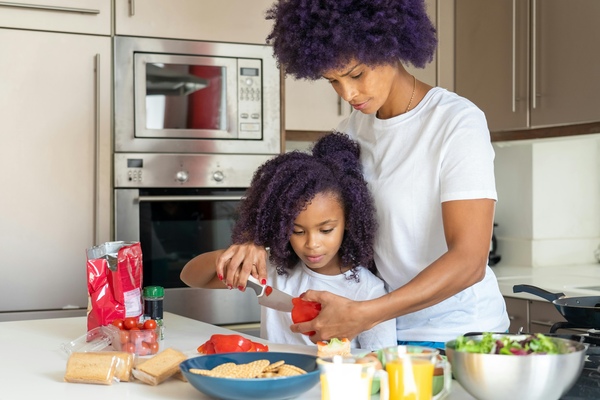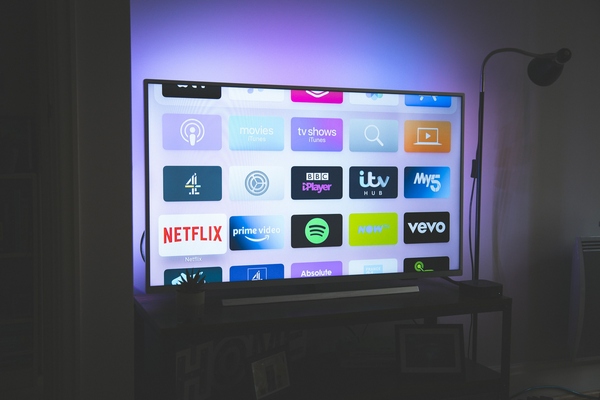Eight Effective Meal Prep Tips (with Healthy Recipes) for Working Moms
Being a mom is no easy feat, but being a working mom can often feel like a herculean task. Balancing a full-time career, caring for children, and ensuring everyone in the family eats well can be challenging. Finding time to cook nutritious meals amidst a hectic schedule may seem impossible, but with some clever meal planning and preparation strategies, it’s entirely achievable.
Here are eight meal prep tips with healthy recipes that will save time and reduce stress while keeping your family well-nourished.
1. Plan Weekly Menus in Advance
Meal planning is crucial to ensure you have a clear roadmap for the week ahead. Without a plan, it’s easy to fall into the trap of ordering takeout or serving processed foods. By dedicating a small portion of your weekend to creating a weekly menu, you’ll save time and effort during the weekdays.
Start by selecting recipes that your family enjoys, and make sure to include a mix of proteins, grains, and vegetables. Once you have your menu, create a shopping list to ensure your pantry is stocked with all the necessary ingredients. Involving the family in planning can also help cater to everyone’s preferences, making mealtime more enjoyable.
2. Utilize Healthy Meal Preparation Techniques
The foundation of healthy eating begins with how food is prepared. Using techniques like grilling, steaming, and baking helps retain nutrients while minimizing unhealthy fats. For example, opting for olive oil instead of butter or deep frying and using an air fryer are excellent alternatives that make meals healthier.
One quick and wholesome meal you can prepare in under 30 minutes is air fryer chicken legs. The air fryer allows you to enjoy crispy chicken with significantly less oil. Here’s how to do it:
- Ingredients: Chicken legs, olive oil, garlic powder, paprika, salt, and pepper.
- Instructions: Coat the chicken legs with olive oil and spices, then cook them in the air fryer at 400°F for 20-25 minutes. The result is perfectly crispy, protein-rich chicken that’s much healthier than its deep-fried counterpart.
Healthy meal preparation techniques like these can make all the difference in your family’s diet while keeping your cooking time short and efficient.
3. Batch Cooking and Freezing
Batch cooking is a lifesaver for working moms. Preparing large portions of soups, stews, casseroles, and grains allows you to have multiple meals ready to go with minimal extra effort. Once cooked, divide the food into individual portions and freeze them. When you’re pressed for time, simply reheat a portion, and dinner is served.
Consider preparing dishes like vegetable lasagna, chicken stir-fry, or chili, which freeze well and can be easily reheated. Label each container with the contents and the date it was prepared to keep track of your frozen meals.
4. Quick Breakfast Solutions
Breakfast is often neglected in the morning rush, but preparing it in advance can ensure your family starts the day right. Overnight oats, chia seed pudding, and egg muffins are great options that can be made ahead of time.
One quick breakfast recipe you can try is spinach and cheese egg muffins. Simply whisk eggs, mix them with spinach and cheese, and bake in muffin tins for 15-20 minutes. Once cooled, store them in the refrigerator for up to five days. In the morning, reheat an egg muffin or two, pair it with fruit or toast, and you have a balanced meal ready in minutes.
5. Invest in Quality Containers
One of the most underrated aspects of meal prepping is having the right storage containers. Investing in durable, leak-proof containers keeps meals fresh and organized, making them ready to grab and go. Opt for glass containers for storing salads, soups, and pre-cooked meals since they’re heat-resistant and won’t retain odors. BPA-free plastic containers are also useful for portioning out snacks and meals.
By using clear containers, you can easily identify the contents without opening them, reducing the time spent searching through the fridge. Divided containers can be especially helpful for pre-portioning complete meals or storing snacks separately. Your organized fridge will inspire you to stick to your meal plan and resist the temptation of ordering out.

6. Prep Ingredients Ahead of Time
Prepping ingredients in advance is a simple yet effective way to save valuable minutes during hectic evenings. Spend some time over the weekend washing, chopping, and storing vegetables and fruits for quick assembly throughout the week. For instance, wash leafy greens and store them in airtight containers lined with paper towels to keep them fresh for longer.
Marinating meats overnight is another smart move, as it cuts down on cooking time while infusing flavors into your dishes. Pre-cooking grains like quinoa or rice is also useful. Store cooked grains in the fridge for up to five days and use them in stir-fries, salads, or as a side dish.
7. Make Use of Slow Cookers & Instant Pots
Slow cookers and Instant Pots are indispensable tools for busy moms. They can prepare hearty and healthy meals with minimal effort. All you need to do is add your ingredients, set the timer, and let the magic happen.
A slow-cooker chicken chili is an excellent option for cold days. Here’s a simple recipe:
- Ingredients: Chicken breasts, beans, tomatoes, corn, and spices.
- Instructions: Combine chicken breasts, beans, canned tomatoes, corn, and your favorite spices in a slow cooker. Set it to cook on low for 6-8 hours, then shred the chicken and mix it back into the chili. Serve with avocado slices, cheese, or cilantro.
Alternatively, the Instant Pot can significantly speed up your meal prep. Dishes that typically require hours of simmering can be ready in under an hour. You can also use it for steaming vegetables, cooking rice, or making yogurt.
8. Keep a Well-Stocked Pantry
A well-stocked pantry is the backbone of any successful meal plan. Keeping essentials on hand makes it easy to whip up quick, healthy meals without a last-minute dash to the grocery store. Some pantry staples to consider include:
- Canned beans and chickpeas for salads, stews, and chili.
- Whole grains like quinoa, brown rice, and couscous.
- Spices and herbs to add flavor to any dish.
- Canned tomatoes for soups, pasta sauces, and casseroles.
- Healthy oils like olive oil and coconut oil.
Having these ingredients readily available enables you to mix and match them with fresh produce and proteins, giving you a versatile and adaptable meal plan.
Conclusion
Meal prepping is an invaluable tool for working moms seeking to balance their career, family, and health goals. By incorporating these practical tips, you can simplify your weekly cooking routine while ensuring your family enjoys nutritious, delicious meals. With a bit of organization and planning, you’ll find that meal prepping not only saves time and reduces stress but also brings joy back to the kitchen. Embrace these strategies, and let meal prepping become a source of ease and empowerment in your busy life.
Read about 10 healthy and easy preschool lunch ideas your kids will love.







 Katie Brenneman is a passionate writer specializing in education, mental health, family lifestyle and online safety. When she isn’t writing, you can find her with her nose buried in a book or hiking with her dog, Charlie. You can follow her on
Katie Brenneman is a passionate writer specializing in education, mental health, family lifestyle and online safety. When she isn’t writing, you can find her with her nose buried in a book or hiking with her dog, Charlie. You can follow her on 


 Explore the Safe Search Engine -
Explore the Safe Search Engine -